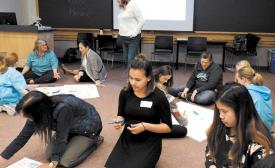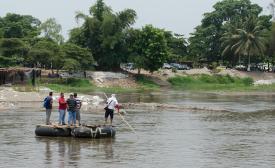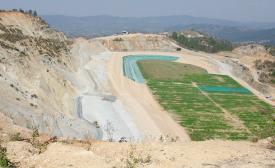nonviolence
Mennonites respond to recent military spending
From Dirk Willems loving his enemy in 1569 to Colombian Mennonites building peace today, Anabaptists have offered a bold peace witness. But being a peace church is complicated.
Rethinking police and policing

'There is good reason in many situations not to call the police,' David Driedger writes. (Photo courtesy of Facebook.com/wpgpoliceofficial)
The Winnipeg Police Service shot and killed three people in less than two weeks earlier this year. More than ever we need to take care about when we as citizens call the police. More than ever we need to think about the relationship between peace and policing.
Celebrating 50 years in Canada

Sue and Sam Steiner celebrate Sam’s Canadian citizenship in 1974.
My husband Sam and I went out for lunch at the end of October to celebrate Sam's 50th anniversary of arriving in Canada as a Vietnam-era draft resister.
Back in Indiana, I had been part of what we would now call an intervention. We his friends implored Sam to immigrate to Canada. We did not think his spirit could tolerate prison in the U.S. at that time.
Nonviolent action in history and today
“In the Second World War there were over 10,000 loyal Canadians who served Canada without weapons. What were they called?” This is the question Conrad Stoesz has been asking students at the Red River Heritage Fair for more than a decade.
Follow the money
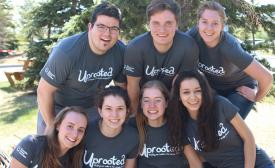
Participants in MCC’s 2016 Uprooted learning tour include, clockwise from top left: Thomas Coldwell (MCC Alberta), Andrew Brown, Alannah DeJong, Allison Goerzen (MCC Alberta), Jana Klassen, Carol McNaughton and Maria Alejandra Toro. (Photo by Thomas Coldwell)
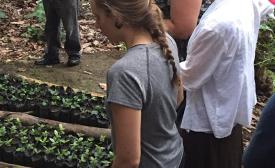
The Uprooted learning tour includes a stop at Cafe Justo, a cooperative in Mexico that allows poor coffee farmers to remain independent. (Photo by Thomas Coldwell)
What is the real cost of the things we buy?
Remembering the mothers of the ‘disappeared’
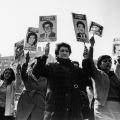
Chilean mothers of the “disappeared” gather, holding signs of their missing loved ones. (Photo by Kena Lorenzini, from Wikimedia Commons)
When I was a young child, my family lived in Chile, where my parents worked at an inter-Protestant seminary. We happened to be there to witness the end of the brutal, U.S.-backed military dictatorship of Augusto Pinochet, as he was peacefully voted out of power in the late 1980s. Even as a child, I knew about the dictatorship’s practice of “disappearing” people—of kidnapping students and dissenters, torturing and often killing them in secret, and then denying any such people had been detained. They were simply gone without a trace.
Gelassenheit and power
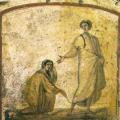
The bleeding woman touches Jesus’ cloak, in an image from the catacombs in Rome. (Photo from Wikimedia Commons)
I got into an interesting discussion with a friend from my church recently. In adult ed., we were talking about liberation theology and its view of sin. (You can read about liberation theology and sin here.)
Making meaning of the attack
When I shared the story of my attack, I got a wide variety of responses from my friends, family, and co-workers. It is difficult to know what to say to people after things like this happen, so I was grateful whenever someone attempted to talk about it with me or to give me advice.
Akido and The Jesus Way
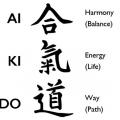
Akido is sometimes described as a nonviolent martial art. At the Northeast Asia Regional Peacebuilding Institute in Hiroshima, Japan, I had the privilege of learning a bit from a Japanese Mennonite professor and akido practitioner. I remember a few key points that seemed a fitting metaphor for following Jesus' nonviolent way.




